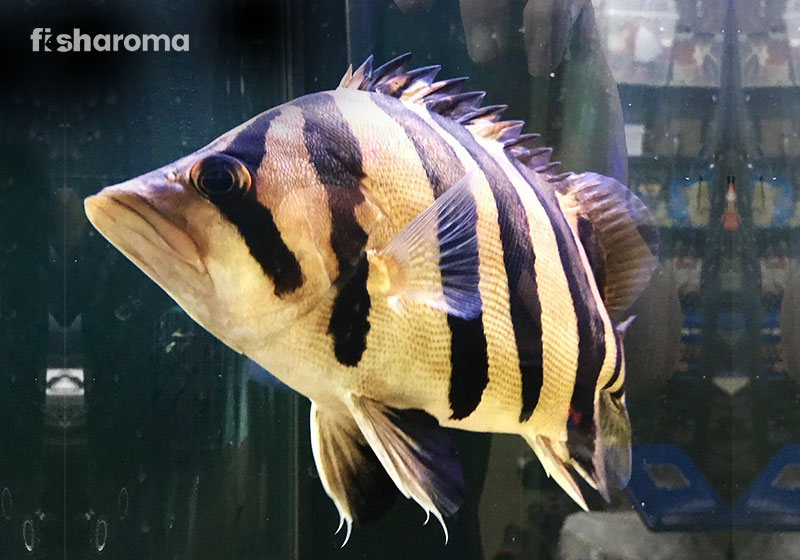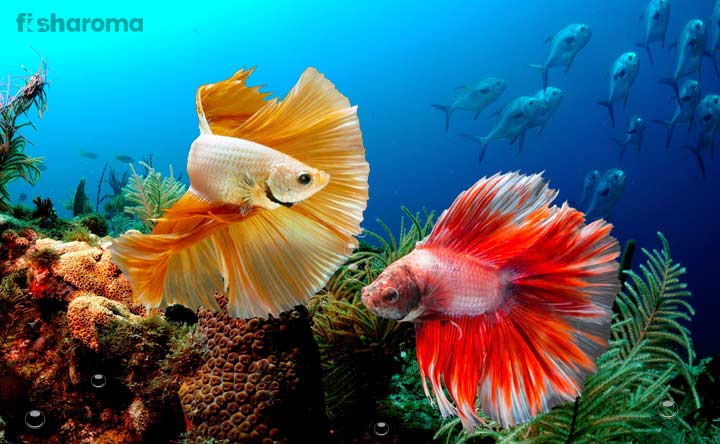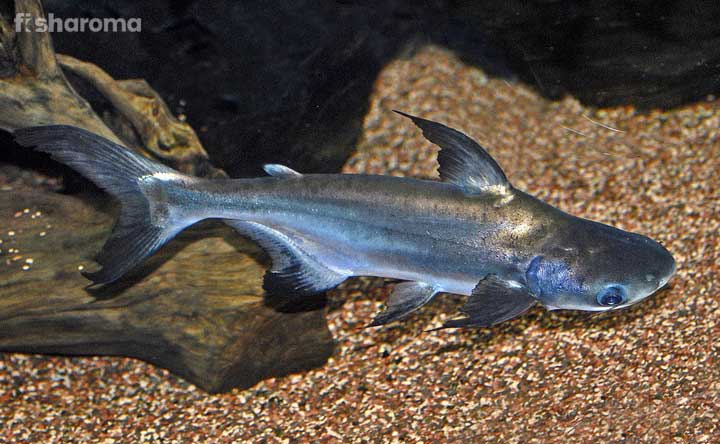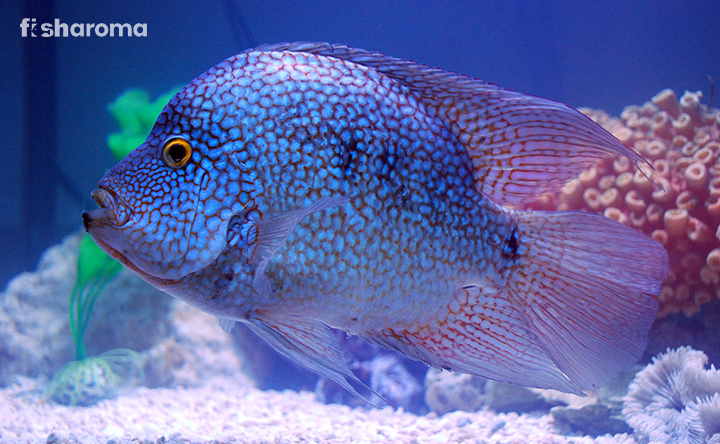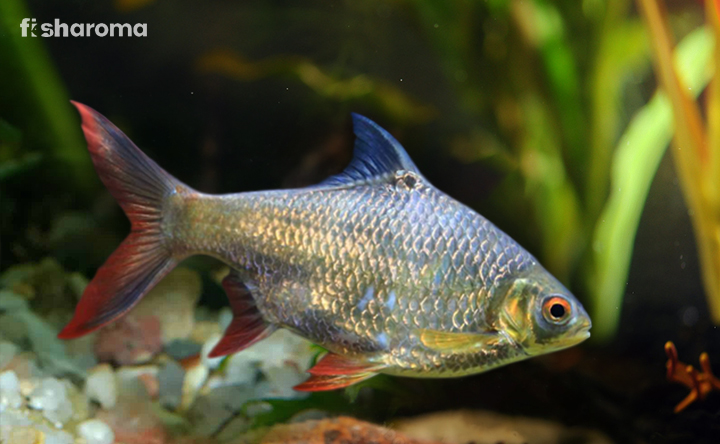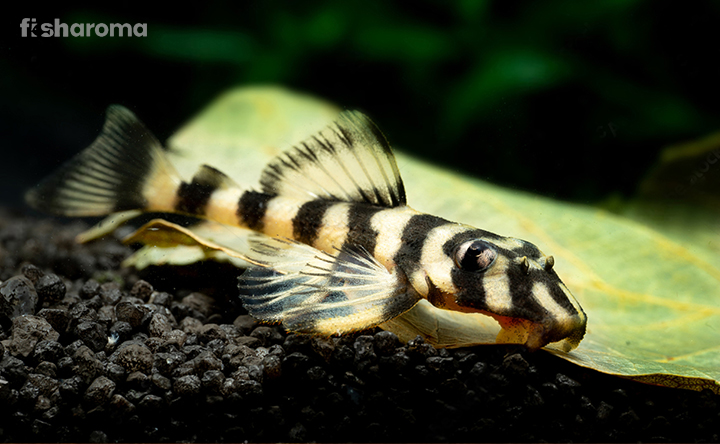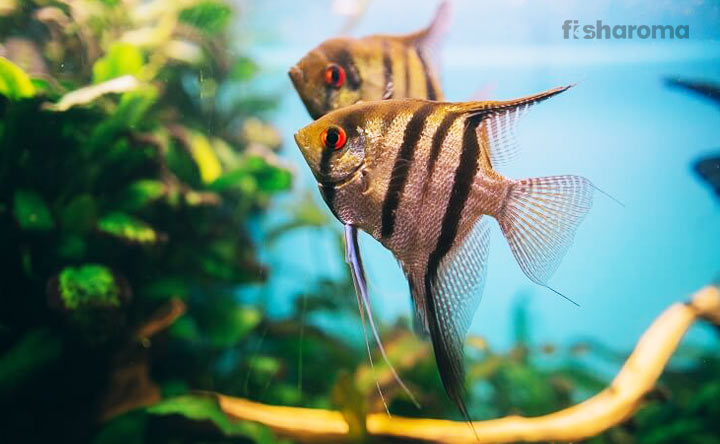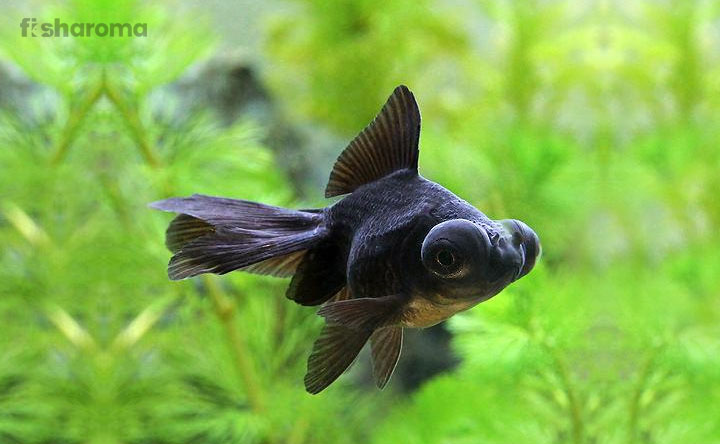Ember Tetra- A Care Guide Of Our Vibrant Fire Tetra

Also known by the name of Fire Tetra, the Ember Tetra is from an order of over 2000 fish across 19 families. This extraordinary breed is known for its vivid vibrancy amongst several aquarists and practitioners in the hobby. This beginner-friendly wonder’s care regime is flexible besides their immense appeal in the tank. The Ember Tetra is arguably the most popular pick under the tropical category in a community tank.
If you are planning to own a few of these in your aquarium, you are in the right place. In this Ultimate Ember Tetra Care Guide, we guide you through the A to Z of every information you need your hands on, especially before you finalize the plan of ownership.
Key Specifications
Here goes a few key elements you need to check before you get started:
| Scientific Name | Hyphessobrycon amandae |
| Origin | Araguaia River Basin, Brazil. Mato Grosso State, Central Brazil. |
| Lifespan | 2-4 years |
| Colours/Patterns | Red or orange colours with selective subtle translucency. |
| Temperament | Peaceful |
| Size | Approximately under 1 inch (0.6-0.8 inch) |
| Diet | Omnivorous |
| Family | Characidae |
| Compatibility | Compatible with most peaceful fishes in the community. |
| Tank size | 10 gallons |
| Care level | Beginner-friendly, easy. |
| Water preference | Freshwater |
Overview
The majestic Ember Tetra is from the Characidae family, growing just about an inch at most. These beautiful community fishes are of peaceful temperament. This variant of Tetras can be easily categorized as all-rounders, as not only do they serve the purpose of visual appeal, but they are quite flexible for beginners.
Origin and Habitat of Ember Tetra
The Ember Tetra fish originates from the River Basin area of Brazil, namely Araguaia. Originally found in the slow-moving waters of bodies like lakes, swamps or rivers, this fish is fascinating in the wild.
The natural habitat of the Ember Tetra consists of dark soils of the riverbed, which is soft and possibly mixed with gravel or small rocks. The areas where this variant of Tetra is mostly seen, is usually surrounded by thick layers of vegetation, heavily sheltered with varieties of plants and trees. Conclusively, forest habitat is ideal for them as an ample presence of greenery comes with plenty of hiding spots, and breeding-friendly locations.
Appearance of Ember Tetra
This small variant of Tetra has a very distinguishable aura to them, and it is not very hard to separate them from other fishes of vibrancy and aesthetics. Ember Tetras look undeniably striking when it comes to tint, or overall appearance.
Let us brief you up a little with their isolated external features:
Colour
The Ember Tetras are available in tints of orangish or bright red colour gradient. Towards the fin region there is a subtle translucency and the eyes have a visible rim of orange. The entire package of colours never fails to grab your attention.
Size
These Tetras are extremely small, as they only grow about 0.8 inches or a max of 1 inch. Surprising thing is, they can be as small as 0.6 inches, appearing like a drop of paint in the tank.
Behaviour of Ember Tetra
Ember Tetras are middle-dwellers, who thrive in any environment with proper hiding spaces. Still don’t get the wrong idea, as these fishes, despite their size are not shy and are unafraid of most things.
They prefer to be in a school of about 8 fish, wandering in the tank as a result of their active nature. However, even after all these perks, they get stressed easily. The Ember Tetras are not usually categorized as fin nippers but they may appear to follow fishes with long trailing fins.
Their swimming speed is fast, from being so naturally active. You will often find them swimming flawlessly through the planted layer of the aquarium, mostly in the middle, or sometimes near the bottom part of the tank.
Lifespan of Ember Tetra
An average span of 2-4 years has been recorded in captivity. These Embers are known to have a short lifespan, but they can always live up to or exceed their life expectancy, if kept under favourable conditions in the aquarium.
Diet of Ember Tetra
As a result of their Omnivorous diet, the Ember Tetras have a varied menu to choose from. Feeding them with a suitable diet is important as it nourishes the fish, and enriches their vibrancy.
Yet to give you an idea of what to feed them, here goes a list of things:
- Zooplankton
- Small invertebrates (worms)
- Brine Shrimp
- Dried fish food
- Dried flakes
Tank Requirements for Ember Tetra
Tank requirements play a huge role when you are planning to keep a certain fish in captivity. Especially in the case of our target fish, Ember Tetra, you must do the most and provide the right things. Let us help you further with that:
Tank Lid
The general importance of a tank lid is to safeguard the fish from jumping out, and protecting the water from pollution as a result of exposure. In the situation of Ember Tetras, they are not known to be prolific jumpers. However, there have been exceptions of them jumping out after being newly added to the aquarium. A tank lid prevents that from happening, other than serving other protection purposes.
Tank Size
A minimum tank size of 10 gallons is recommended. However, it is good to increase that with the numbers or the number of plants or ornaments present in the tank.
Substrate
Ember Tetras are flexible with most substrates but it is always good to take hints from their natural habitat. (more on that in the Origin and Habitat section) A fine substrate that is not too small, as they are prone to choking on substrates of that sort. The substrate should have elements larger than the size of their mouth, as that way the Tetras won’t be able to ingest it and get ill.
Filter
The waste production is pretty high in these Tetras, so a regular aquarium filter is proven to be beneficial to free the water from debris. An Undergravel, Canister or a Sponge filter would suffice.
Ornaments
The fast-swimming Ember Tetras love a decorated tank, as long as there’s enough room for them to swim around. Tall decorations as per your tank size is a good pick, which not only looks good, but provides hiding spots and personal space for the schooling fishes.
Lighting
There is no specific demand when it comes to Ember Tetras, still, emulation of natural habitat is the only right way to go. To play it safe, keep the tank with dim lighting.
Presence of Flora
Ember Tetras prefer a heavily planted tank with plenty of vegetation around. To have an adequate balance between the abundant presence of vegetation, swimming space and places to hide, is suggested.
Cleaning Method
The Ember Tetras produce a large amount of waste, so periodic cleaning of the tank or water replacement is necessary. We suggest you also change the substrates from time to time, and clear the tank walls more often. This frees the fish from unwanted matter that will probably affect them.
Water Type for Ember Tetra
Water Type or the water parameters are of ultimate importance, especially when it comes to the health of the fish. Other than tank size or other requirements, the water profile is truly responsible for balancing the overall tank environment.
Moving forward, we know the importance of a proper water profile. Let us have a look at a few things you may need to know:
| Hardness | 5-17 dGH |
| Temperature | 23-29 Degrees Celsius |
| pH | 6.6 pH (5-7 pH approximately) |
Hardness
A hardness of 5-17 dGH is a good balance of hard and soft characteristics. The Ember Tetra fishes prefer their water to have a good balance.
Temperature
Sticking to the right measures is important, as the Ember Tetras like their water warm. So a temperature range of 23-29 Degrees Celsius is needed.
pH
pH is directly related to the fish’s health, so we recommend a range slightly on the acidic side. So a pH of 6.6. (5-7 pH approx.) is ideal.
Compatibility of Ember Tetra
In short, these Ember Tetras always like to flutter around in groups, it is truly interesting to see them swim in a bunch. Ember Tetras can exist with fishes of most shape and size range, especially in the wild.
Suitable Tank mates
To give you a proper idea, let us name a few buddies you can pair them up with:
- Chili Rasbora
- Guppy
- Nerite Snails
- Cherry Shrimp
- Rosy Tetra
- Bleeding Heart Tetra
- Neon Tetra (black variant)
- Small Catfish (Corydoras)
Unsuitable Tank mates
Although in the wild, they may be able to exist without much disturbances with fishes like Pleco, Pygmy Rasbora and more, the situation takes a 360 in captivity. The Ember Tetras may have a clash or be victimized by the most aggressive fishes, who like to be predators. So, they clearly have the size disadvantage, if not the temperament.
Other than that, as we have already talked about it above is their questionable fin nipping nature, which also brings trouble to the choice of tank mates.
Here goes a few unsuitable tank mates, so that you have a clear idea at the time of choosing:
- Cichlid (like Convict Cichlid)
- Gourami (most)
- Jack Dempsey Fish
- Oscar fish
- Betta fish
- Tiger Barb (Rambunctious Barbs)
- Clown Loach
Breeding of Ember Tetra
Breeding Ember Tetra fishes is not complicated, as all you need for the process to go smoothly is a separate breeding tank. The pH should be closer to 7 around this time and the waters should be at least around 26 Degrees Celsius. The comparatively warmer waters in the breeding tank is advantageous to the spawning process as a whole.
The Ember Tetras leave their fry after they are born to survive on their own. Still, we recommend you to possibly separate the fry before shifting them to the community tank. This particular act may help in preparing the fry, before they try to adjust to the normal fish tank environment.
Diseases of Ember Tetra
These Ember Tetras may not have worry-some species-specific diseases, but they are very well prone to be affected by most common freshwater fish diseases.
Parasitic Diseases- Parasites are a nightmare for most Tetras, so naturally our precious Embers weren’t spared either. Any type of parasitic infection is capable of triggering many things like pores, skin, white dots or digestive ailments like bloating.
Originally known by the name of Ichthyophthirius multifiliis or as we know “Ich” can seriously cause damage to our Ember Tetra fish’s health. In this case, missing scales, trouble in breathing, lethargy or inflicting bruises are common. These protozoan fish parasites can seriously hurt the overall health of the fish.
Treatment
A few ways of prevention and treatment are as follows:
- You must maintain the quality of water in the tank by keeping an eye on the water profile from time to time.
- The sick fish or group needs to be isolated immediately, as keeping them long enough will directly affect the other healthy fishes in the same tank.
- Keep an eye on the fish for the sake of early signs detection, in that way a remedy can be provided on time.
- To have a look at their diet or any dietary demands or need of alterations must be noted. In this way, you can scoot free from any dietary illness possibilities.
- Neglect should be the last thing you want to do, as ownership comes with responsibilities, and not delivering proves fatal to the fish’s life.
Summary
The Ember Tetras are beautiful and unique, as not only do they look good, they are intelligent. Their intelligence is pretty evident from their method of interaction inside the tank. Plus, the two great qualities you look for in an aquarium fish is mainly their strength to adapt and temperament. They have it all as they are extremely peaceful and are hardy enough to deal with most parameters thrown at them. All these positive factors make them a very fitting choice for your tank.
Similar Care Guides
- Diamond Tetra Care Guide: This Diamond Characin is extremely beautiful, their silver hues make this fish look a literal diamond! For more on this freshwater wonder, check this out.
- Bleeding Heart Tetra: A unique heart like pattern on their clear body is where their name initially originated. Easy to care for, check out more about these wonders from the Characidae family.
- Black Skirt Tetra Care Guide: Their extraordinary dark hues never fails to grab your attention. They live for up to 5 years with great compatibility with most fish. Know more!

